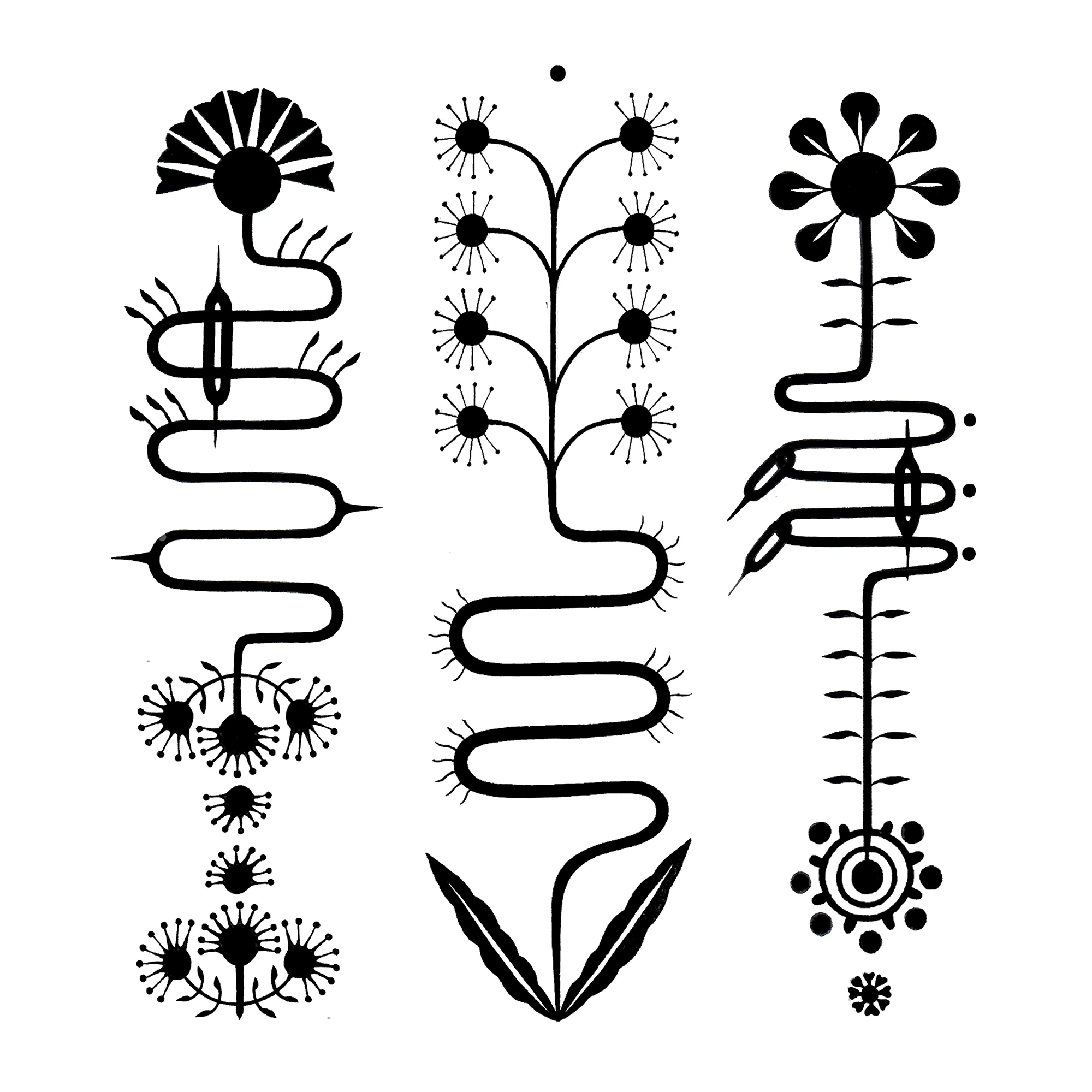This chapter is the text written by curator Sandra Dyck. It is two minutes long.
Sandra writes:
The groundbreaking American writer Audre Lorde famously described herself as “Black, lesbian, mother, warrior, poet.” Lorde rejected external definitions of her identity that singled out, or marginalized, any one of these categories. Her poetry, she said, “comes from the intersection of me and my worlds.”
These questions of the part and the whole, of identity and belonging, are central to the work that Gayle Uyagaqi Kabloona made for Drawing on Our History. Born in Qamani’tuaq — or Baker, as she calls it — to an Inuk father and a white mother, Kabloona has long lived away from the community. All her life, as she writes on these drawings, she has been asked, “What are you?” “Where do you belong?”
Kabloona belongs to making — to drawing, sewing, printmaking, knitting and building clay pots by hand. She belongs to the objects depicted in these drawings — sharp ulus with handles of wood or antler; a stone kudlik; a beaded sealskin marnguti that holds kudlik wicks; spherical ornaments made from ptarmigan gullets called puvviat — and to the creative acts that give rise to them. She belongs to her family tree, whose branches reach west to California and north to Inuit Nunangat.
Kabloona also belongs to the places she’s made home — Baker, Iqaluit, Ottawa. She belongs to the old stories she heard from her dad when she was a child. She belongs to the extraordinary legacy of visual culture inherited from Qamani’tuaq artists including Victoria Mamnguqsualuk (her grandmother), Jessie Oonark (her great-grandmother) and Luke Anguhadluq. Kabloona’s work comes from her intersection with all these worlds, and many more.
Please move to the next stop, which is in the High Gallery, or small arm of the “L.” Follow the path straight for 13 and a half metres. Then turn left and continue for 3 and a half metres. You are in the High Gallery now, with a 6 metre high ceiling. The drawing is on your left.

Gayle Uyagaqi Kabloona is an Inuk artist based in Ottawa, and was invited to be part of the exhibition by Sandra Dyck, Director of...

This chapter describes part 1 of Sans titre by Melanie Myers, made in 2022-23. It is two minutes long. In front of you is...

This audio description tour was written by Fiona Wright and recorded and edited by Nicole Bedford. Thank you to Rich Hillborn and Ludmilla Dubuisson...